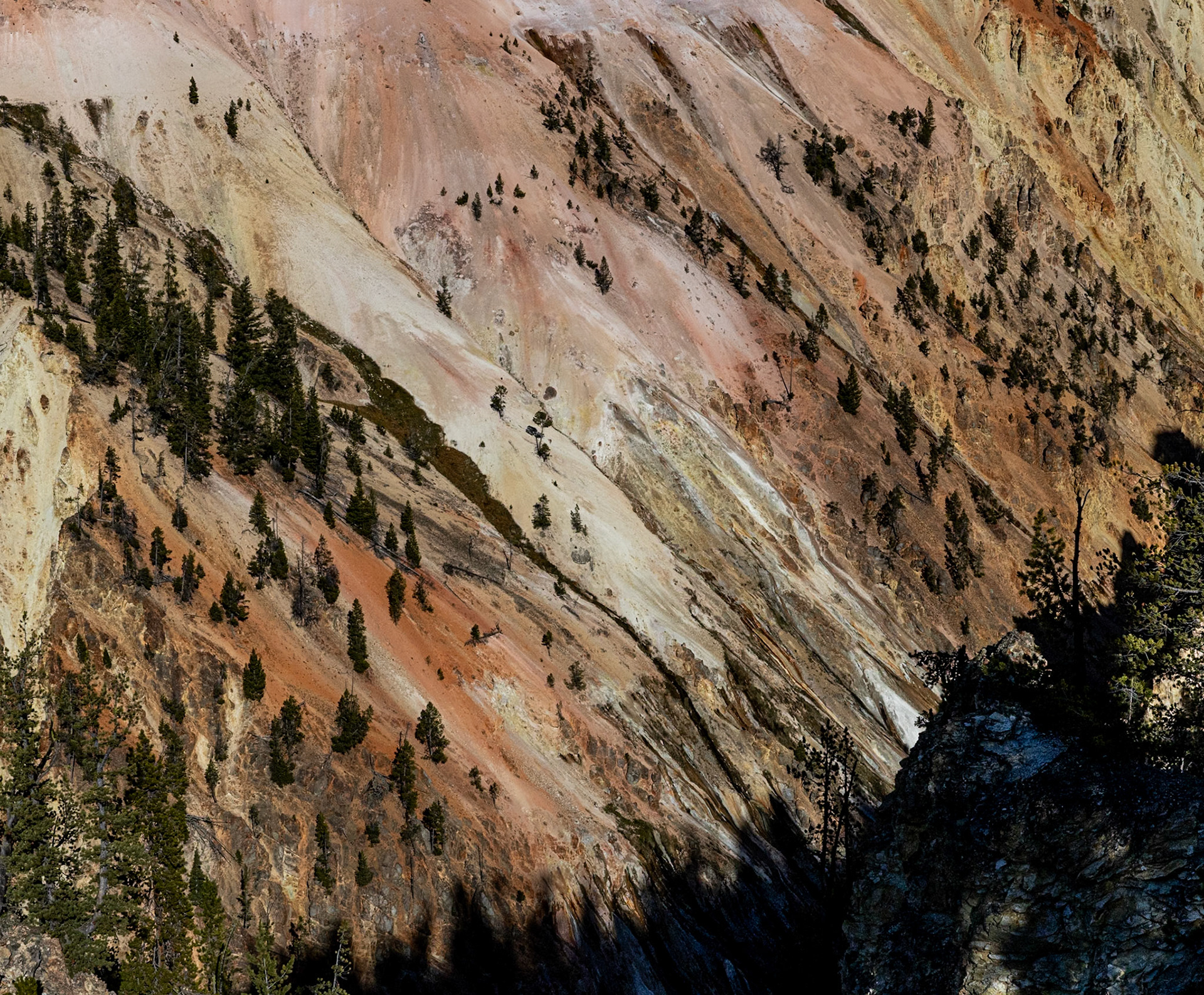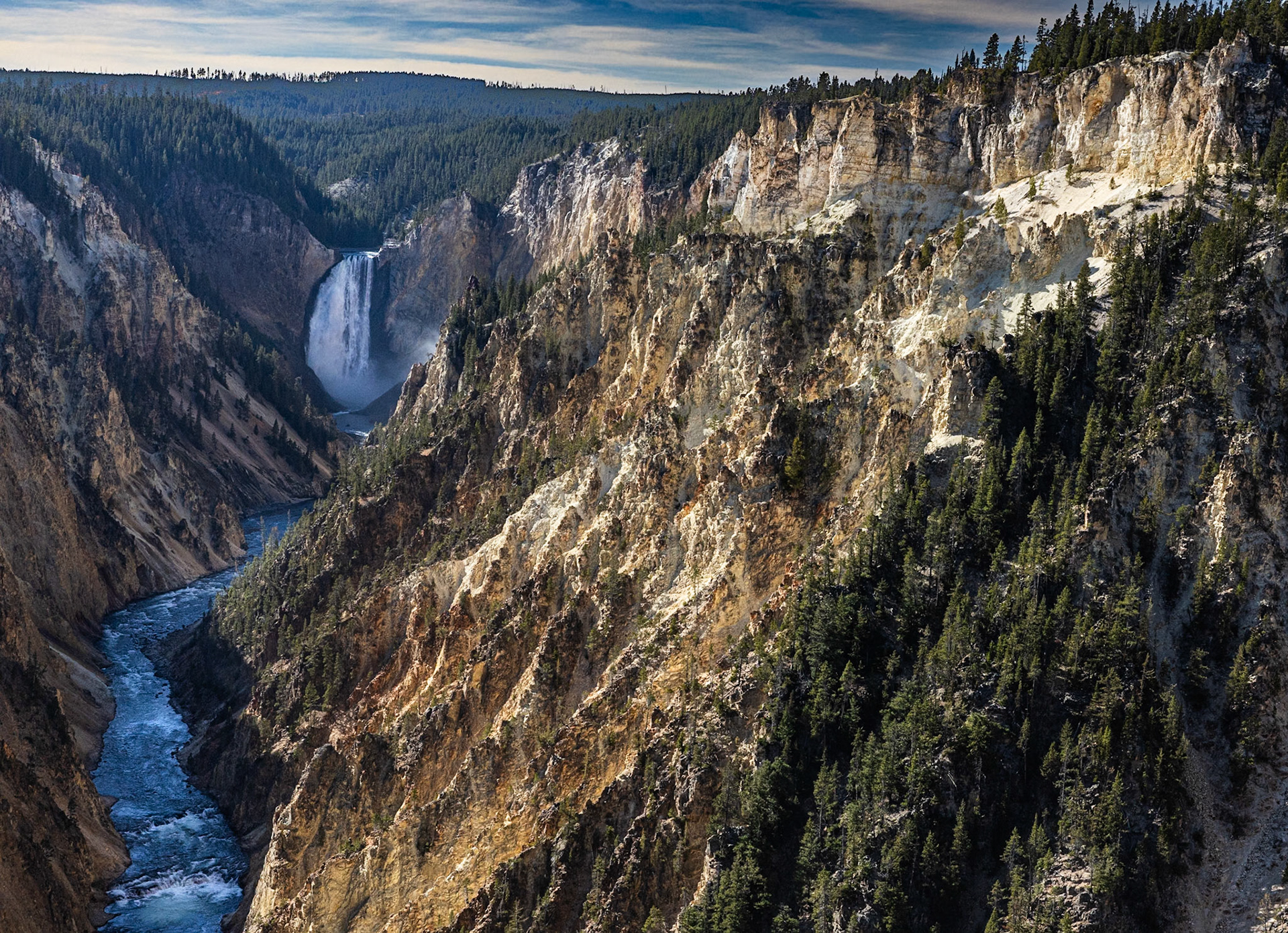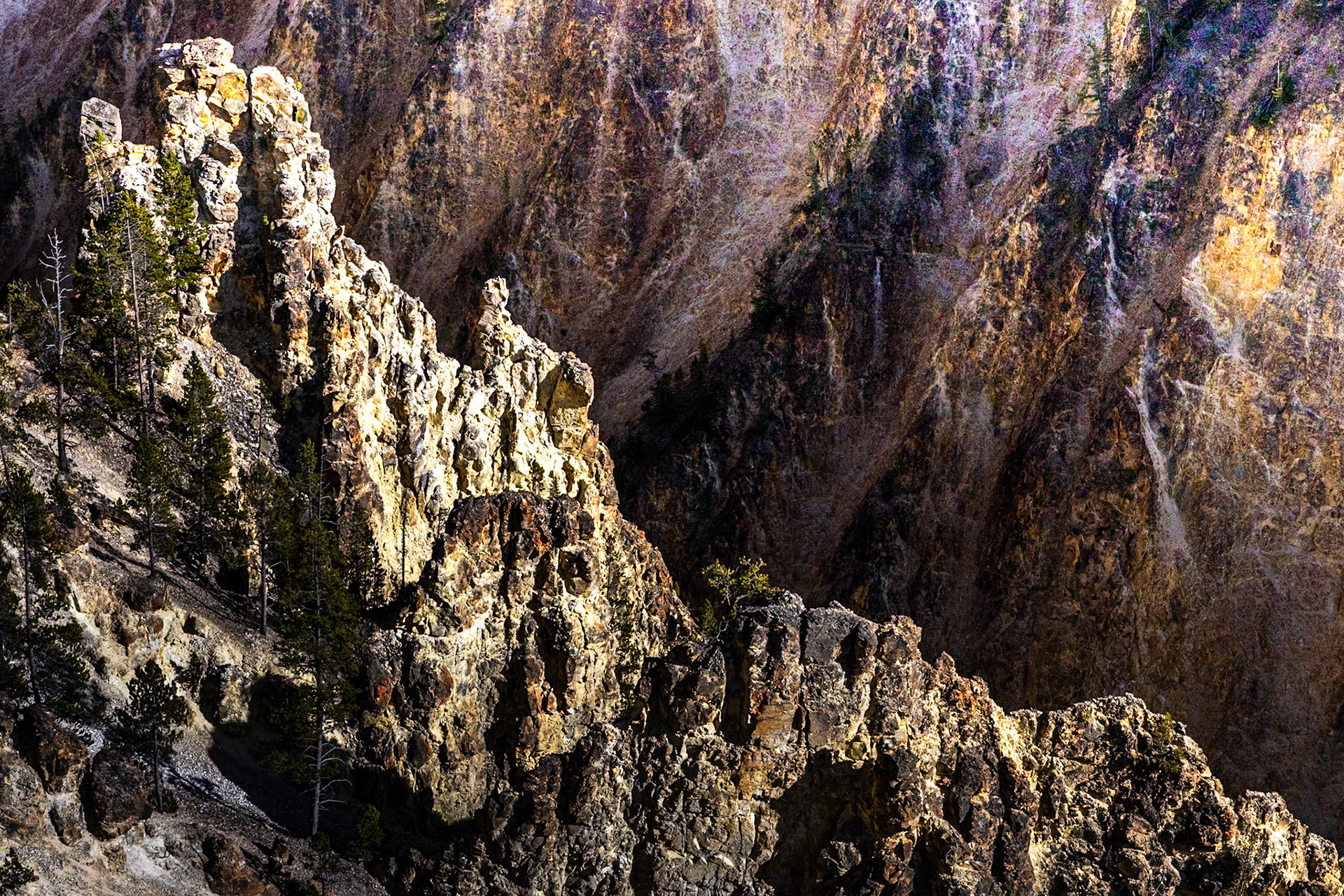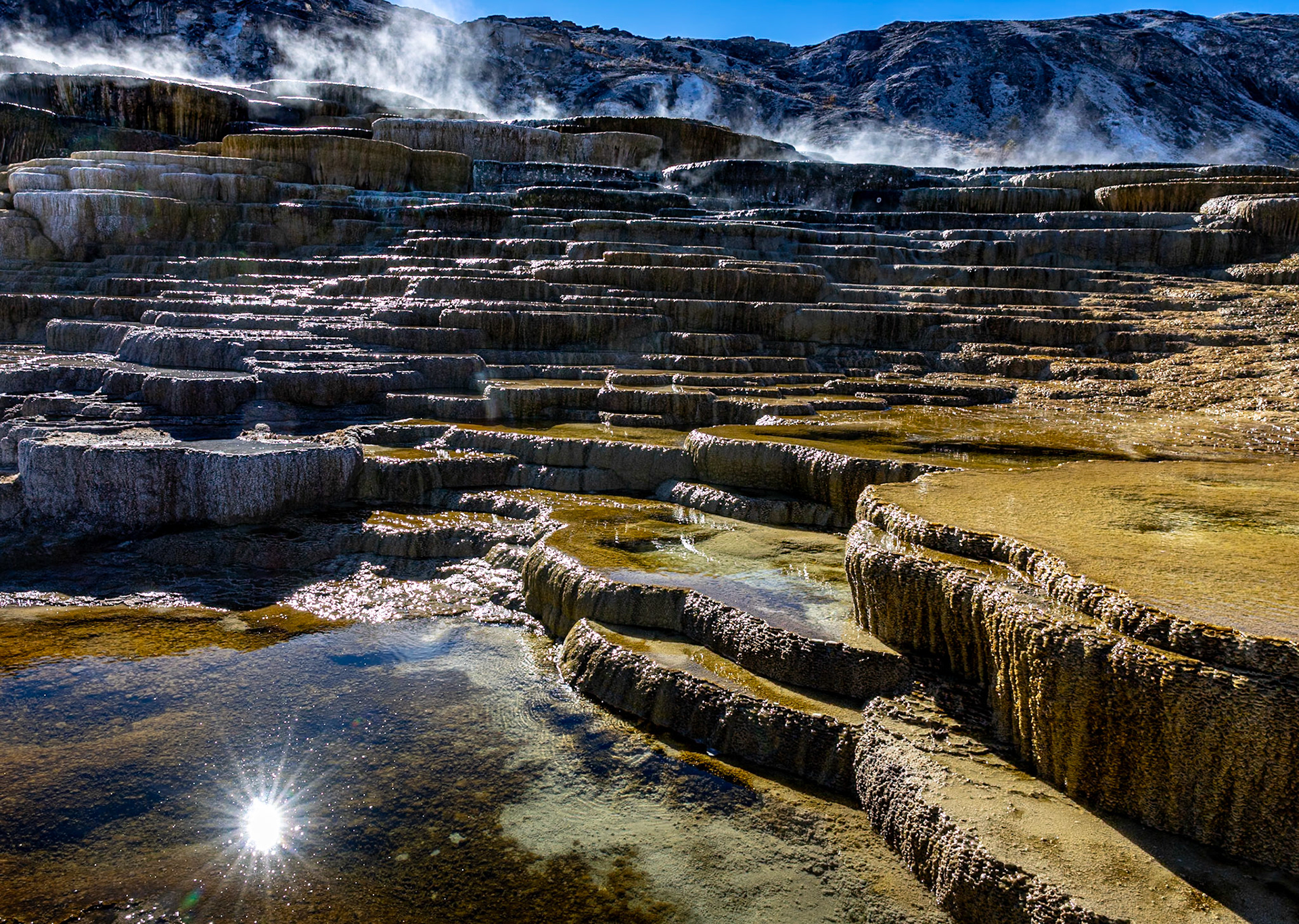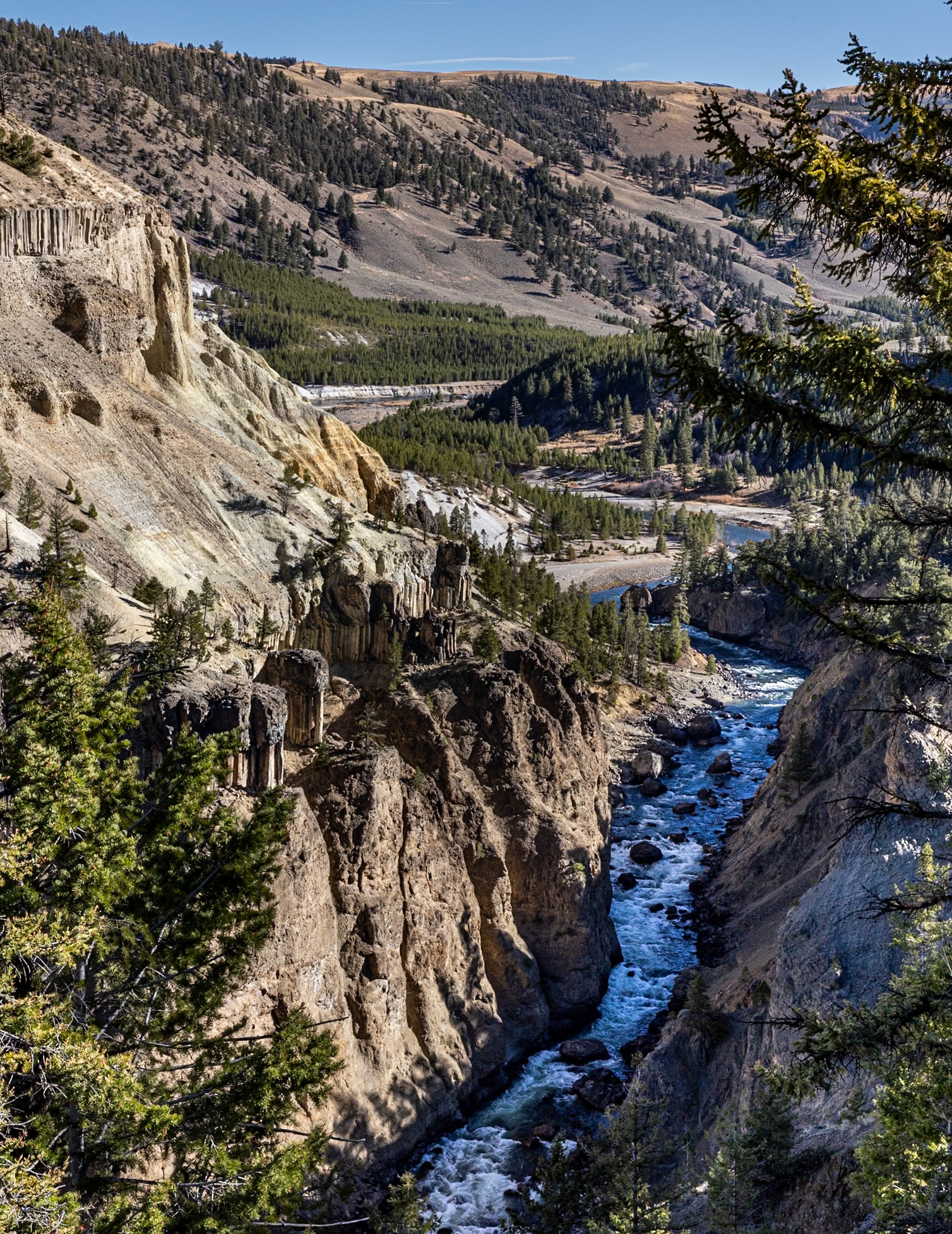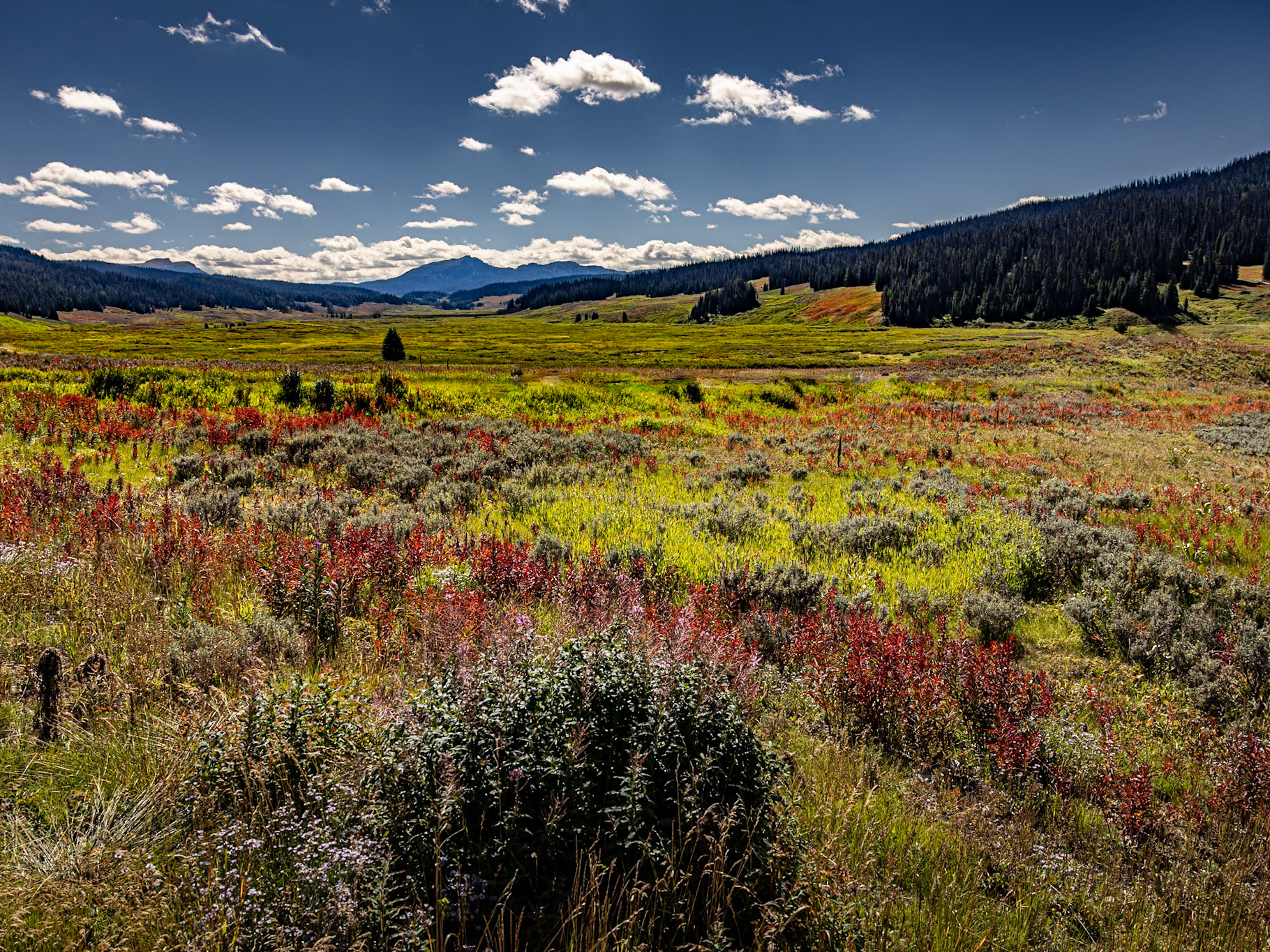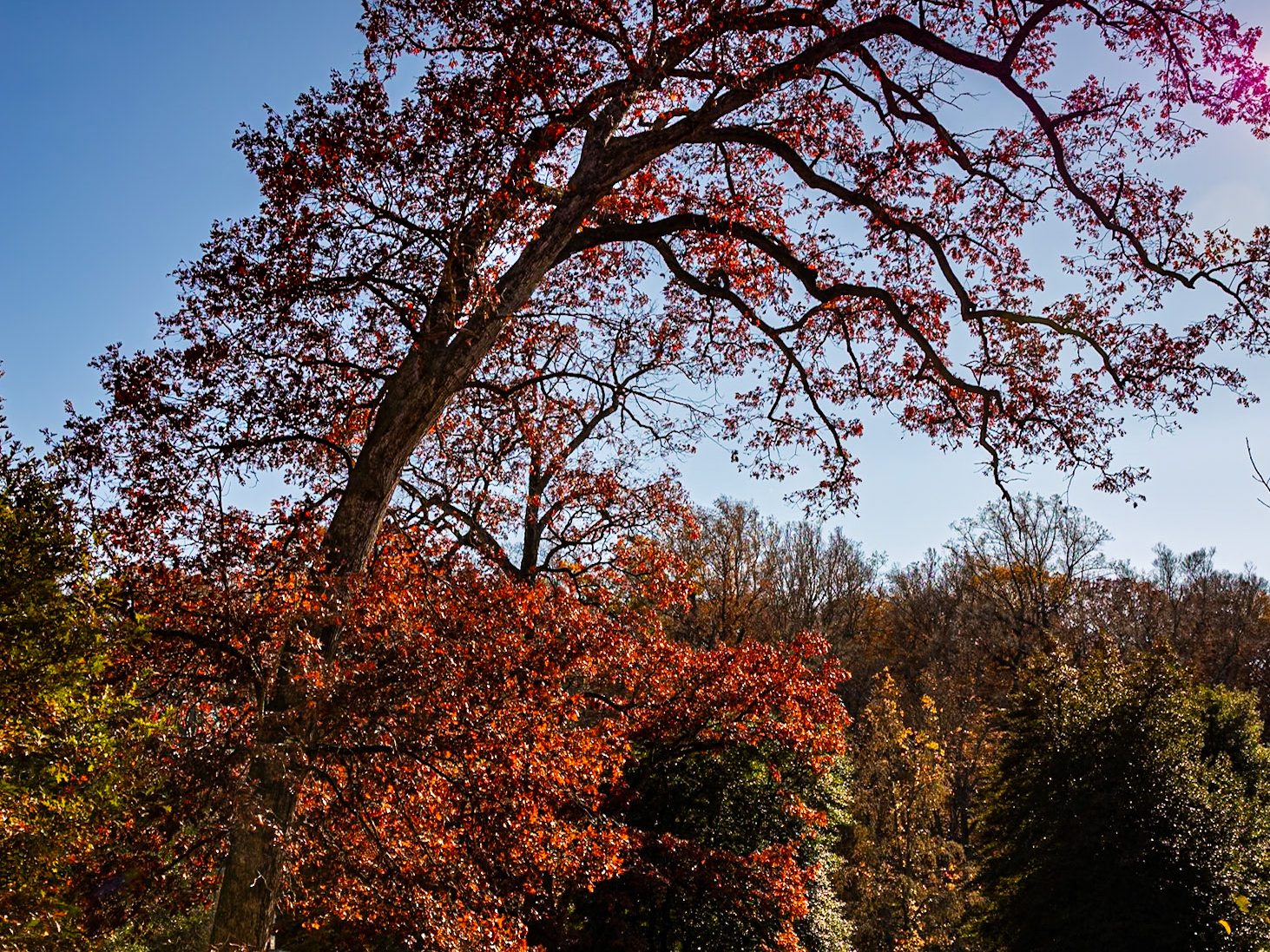Yellowstone was the first national park in the U.S. and the world. Signed into law by President Ulysses S. Grant in 1872, it consists of roughly 2.2 million acres, mostly in the north/west corner of Wyoming, but spilling into bits of Montana and Idaho. The park sits atop some of the world's most significant geo-thermal activity. It's famous for having more geysers and other hydro-thermal features than any place on earth. The center of the park sits above a collapsed volcano, or caldera, that caps a huge reservoir of molten rock that acts as the generator for the steam and boiling water that we view from above. The park houses significant water features, including Yellowstone Lake, the largest high elevation lake in North America, and eight rivers that originate in the park and flow in all directions searching for the seas. The Yellowstone River is noteworthy for having carved the amazing Grand Canyon of Yellowstone before becoming a principal tributary of the Missouri River. The park is also famous for its rich and diverse population of wildlife, including Bears, Wolves, Deer, Moose and, of course, Buffalo. Chances are you'll get stuck in a Buffalo jam at some point while driving through the park. Remember, they don't yield! With almost 5 million visitors each summer, it's best to come in the early Spring or late Fall. Much of the park is closed to cars from November through April, although the winter can be a great time to visit via snow coach or snowmobile. The pictures in this gallery represent a small sample of the locations and sites to be seen in Yellowstone. One could spend several lifetimes exploring its wonders. When the crowds die down, it's a place of great beauty, possessing a spiritual atmosphere like nowhere else.


